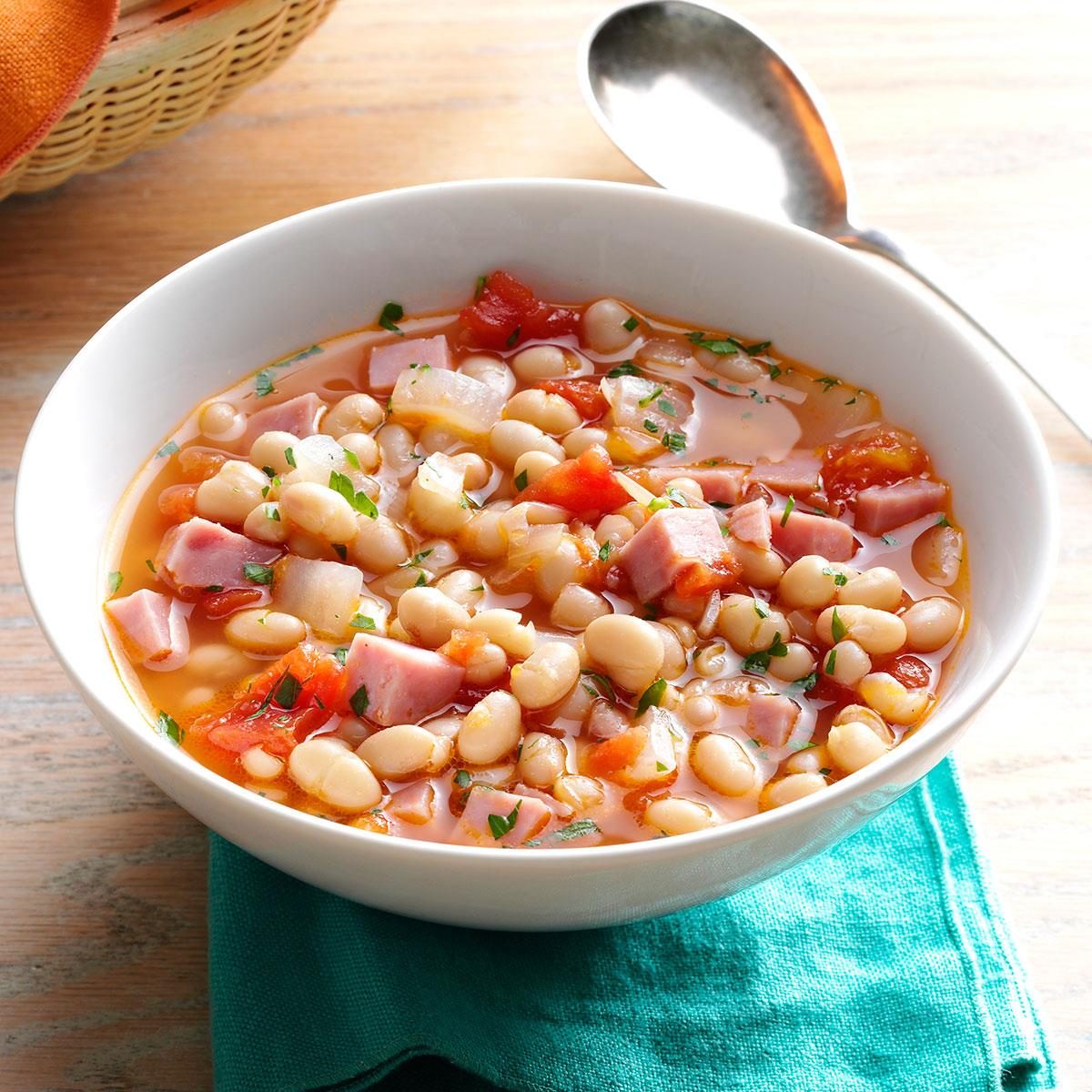The lower portion of a hog’s leg, known as the ham hock, contains the meat, bone, tissue, and fat. Ham hock is typically cut into 3-inch pieces and smoked. Although ham hock isn’t typically served as an entree, it’s frequently added to stews, bean dishes, and vegetables to give them a smoky, salty flavor. After adding flavor, the ham hock is either removed from the dish or left in it. If you’re thinking about using something else in a recipe instead of ham hocks, pick something that has a strong salty and smoky flavor.
Food that is similar to ham hock in flavor can be enhanced by using smoked turkey. Use wings, drumsticks or neck bones as a substitute. When substituting, combine smoked turkey and ham hock in equal amounts. In the same manner as the recipe directs for the ham hock, add the smoked turkey. Generally speaking, using smoked turkey rather than ham hocks will produce a flavor that is a little less salty. If the flavor seems to be lacking, season to taste with table salt or kosher salt.
Meat stock can give a dish a flavor similar to that of ham hocks. For dishes where the cook is instructed to take out the ham hock before serving, meat stock works best. In the recipe, replace the water with the meat stock to replace the ham hock. The preseasoned meat stock has a flavor that is comparable to the water used to cook ham stock. Use equal parts stock to water for equal flavor. Choose a stock that is labeled low sodium if you have high blood pressure or are on a low sodium diet.
Any other type of pork can be used in place of the ham hocks, and the flavor will be similar. Ham hock can be substituted with salt pork, bacon, guanciale, cubed ham, or even a ham bone. Except for salt pork, replace each of these ingredients pound for pound with ham hock. Use a 1 to 2 ratio of salt pork to ham hocks when making salt pork.
Smoked salt works well in vegan and vegetarian recipes to replicate the savory, smoky flavor of ham without using any meat. Smoked salt is comprised of sea salt and smoke volatiles. For each pound of ham hock that the recipe calls for, replace it with one tablespoon of smoked salt. Use a wood cooker to smoke sea salt or coat it in liquid smoke to create your own smoked salt.
Where to Buy a Ham Hock?
Although hocks can be purchased fresh, they are typically salted and smoked to give them that mouthwatering, bacon-like flavor.
In general, ham hocks are not hard to find. They’re available in most grocery stores and butcher shops. Many times, they’re sold in pairs.
The best part is that ham hocks are frequently extremely affordable (often just a few dollars per pound).

Credit: Hector Manuel Sanchez
If you can’t find a ham hock, don’t worry. Pork shank, smoked bacon, or smoked sausage are simple and minimally alter the recipe.
Not eating pork? Smoked turkey bacon should work just fine.
It might be more difficult for vegetarians to replicate the ham hock’s flavorful mouthfeel. When preparing a dish that calls for a ham hock without meat, be sure to use more oil to make up for the absence of renderings. Additionally, it’s crucial to add more salt and seasoning because the pork’s savory flavor isn’t being absorbed.
In the meantime, smoke and paprika can help replace the missing smokeiness.

Credit: Victor Protasio
Check out a few of our favorite recipes that use ham hocks if you’re ready to give it a try:
What Is a Ham Hock Used For?

What Is Ham Hock and Where Is It on a Pig?
The joint that connects a pig’s foot to its leg is known as a ham hock or pork knuckle. Although a hock is not technically an ankle, it is anatomically situated near the lower calf or ankle of a human.

Credit: Getty s
Ham hocks should not be confused with the pig’s foot or shank (shin).

Credit: Iain Bagwell; Styling: Cindy Barr
Ham hocks are used primarily to flavor dishes.
As it is, the hock itself isn’t particularly appetizing. It mostly consists of skin, tendons, and ligaments. To make the meaty parts palatable, a lot of cooking is necessary.
That’s not to say they can’t be eaten by themselves. In many traditional European dishes (such as the German Eisbein or the Polish Golonka), ham hocks are consumed whole.
However, they are typically prepared slowly with soups, vegetables, or sauces.
The collagen and fat from the hock dissolve into the hot liquid as it cooks, giving the stew a distinct, savory, smoky flavor that is exclusive to the meat cut.
Various traditional dishes in the American South depend on the humble ham hock. It’s a crucial component of numerous recipes for pinto beans and collard greens in particular.
Split pea soup and particular navy bean recipes are other dishes you might be familiar with that rely on ham hocks for their rich and smoky flavor.
